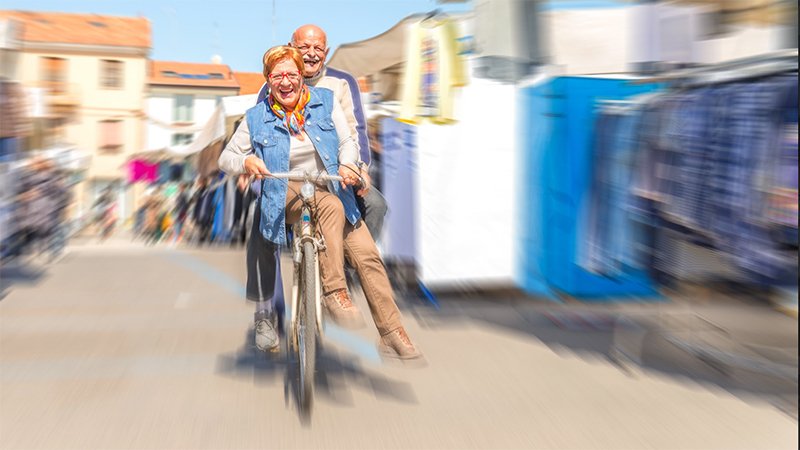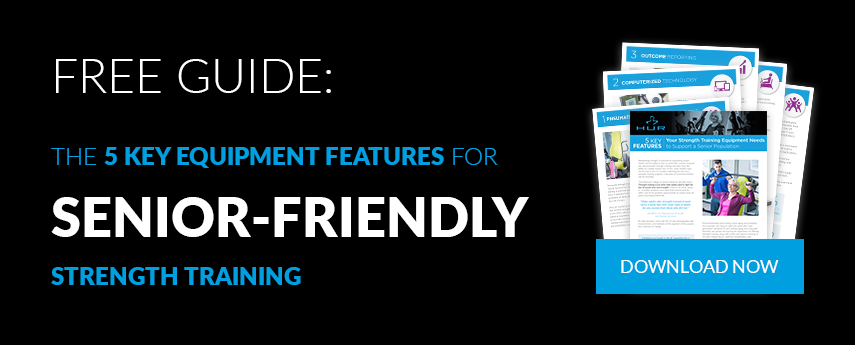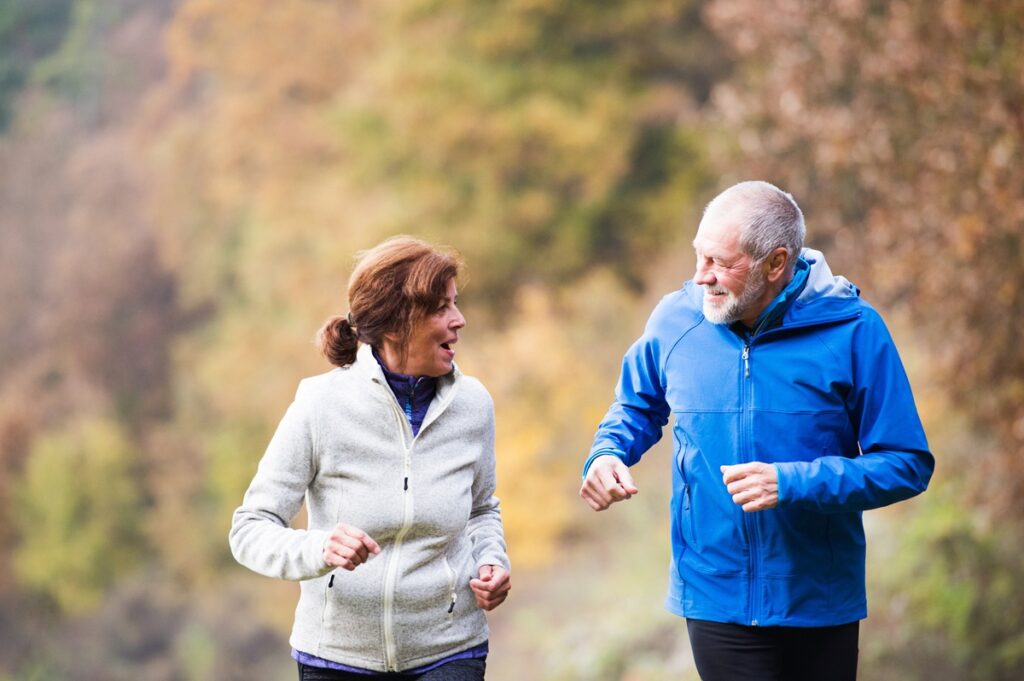A Whole-Body Exercise Routine for Seniors with Limited Endurance
Ask a variety of older adults what’s most important to them, and you’ll probably receive similar answers: remaining independent, mentally sharp, and active enough to do the things most important to them.
Although the average lifespan for Americans has increased by about 5 years since the 1960s, living a longer life is not a guarantee that those extra years will be spent living a healthy, active, independent life. So, one of the most pressing questions for healthcare and administrative professionals who work with older adults is… How can we support our senior population in their desire to grow older healthfully so they can enjoy those extra years to the fullest extent?
Active aging means having a plan and committing to it.
Active aging that supports a high quality of life doesn't happen by accident. This is especially true when it comes to exercise. One government study estimates that nearly 80% of American adults do not get the recommended amounts of exercise each week, with adults 65 and older being the least likely to engage in a regular exercise routine.
Unfortunately, for many older adults, committing to a strength training and exercise program only happens when they are faced with serious health problems. It’s a vicious cycle: Less exercise and activity means weaker bones, reduced muscle strength and flexibility, which leads to health problems that make taking on an exercise routine that much more difficult.
So, while the ideal is a whole-body exercise routine that includes strength, balance, and flexibility training along with cardio activities and amounts to an average of 30 minutes of exercise each day, that simply isn’t feasible for all older adults. Especially seniors with health challenges or who are just starting out with an exercise program.
So, what are the most effective whole-body exercises for improving overall physical conditioning with limited endurance?
Here’s a list of the 5 best exercises for seniors who want to retain or rebuild their independence:
1. The Leg Press
Strong leg muscles are essential to maintaining independence because they support so many "normal" everyday activities, such as sitting down, standing up, and walking. But strong leg muscles are also essential for seniors who want to maintain interests and activities that require more assertive physical movements like playing with their grandchildren, walking on a beach or hiking, swimming, or playing golf.
Properly done, leg press exercises strengthen nearly all the leg muscles, including the hamstrings, quadriceps, hip adductors, glutes, and calves. As a seated exercise, the leg press is also practical and beneficial for older adults with full use of their legs, but who require the use of a wheelchair for many daily activities.
The HUR Leg Press is specifically designed for older adults to safely, effectively, and independently build strength in the muscles of the legs, hips, and glutes. Knee hyperextension eliminators exclude dangerous areas of movement while the Leg Press machine helps clients maintain proper technique when performing strengthening exercises.
One word of caution: When performing the leg press, it’s important that the individual is able to sit on the leg press machine in a comfortable position that supports their back. Even when training with low to zero resistance, there is a risk of back injury without back support or if the machine isn’t properly adjusted to its height and weight.
2. Triceps Press
What the leg press does for lower body strength, the triceps press accomplishes for upper body strength. This exercise builds strength in the muscles of the arms, shoulders, and chest. Upper body strength is also important for "regular" daily activities such as raising and lowering one’s self into an armchair or wheelchair, lifting and carrying items and performing routine daily tasks like grocery shopping, cooking, cleaning, home maintenance, and driving.
The HUR Dual Functioning Biceps/ Triceps machine is specifically designed for older adults to safely and comfortably train the muscles of the biceps and triceps. With independently moving arms, the machine effectively works two complete muscle groups, saving facility space and supporting efficient, independent workouts.
To prevent injury and minimize stress on joints when performing the triceps press, it’s important that the seatback be straight up and down, and the seatbelt is securely fastened. The machine’s seat should be adjusted to a height that allows the elbow to be bent at a 90-degree angle with hands gripping the handles directly below the shoulder joint.
3. Rhomboid Exercises
Rhomboid exercises are an important part of balanced upper body strength training that supports posture, balance, and independent living. Poor posture alignment can cause chronic neck, shoulder, and back pain that leads to reduced activity and, eventually, muscle atrophy and weakness.
The rhomboid muscles are located on the upper back just underneath the trapezius muscle. They play a big part when it comes to posture because they are used to pull the shoulder blades together and provide stability for your shoulders.
The HUR Optimal Rhomb helps seniors safely build strength in the rhomboideus muscle group of the back, neck and arms, supporting posture and upper body strength. The machine comes with a digital, automated training system that allows for evidence-based, independent training and rehabilitation.
4. Low Back Extension
Strong lower back muscles are vital for living an active, pain-free, independent life. Unfortunately, low back pain is common amongst older adults and can have a tremendously negative impact on quality of life. It is estimated that approximately 1/3 of Americans are living with lower back pain, with the percentage much higher amongst older adults.
The low back extension strengthens the muscles that control the movement of the lumbar spine which can greatly decrease discomfort and increase functionality in seniors who have been living with weak back muscles.
The safest way to perform the low back extension is with the HUR Abdomen and Back Extension Machine which features range limiters and zero resistance starts that help users at all ability levels strengthen the muscles in the lower back without risking injury.
5. Neck Extension
If you can hold your head up all day without pain, thank your neck extensor muscles. Considering the fact that an average head weighs about 15 pounds, it’s no wonder that as the neck muscles become weaker, many seniors experience daily neck and shoulder pain.
If weakness in these muscles leads to injury, seniors can find it difficult to hold their head up for many activities we all take for granted, like eating a meal or having an extended conversation with a friend or family member.
Performing a basic neck extension exercise is simple. Stand with your feet set shoulder-width apart or sit upright in an armless chair with both feet firmly on the ground. Hands should be at your sides, fingers pointed towards the floor. Slowly tip your head back while doing your best to keep your shoulders relaxed and your spine straight. Hold for 15 to 30 seconds, then return to the starting position.
Repeat the exercise four to six times. Increase resistance by using your hand to add slight pressure as you tip your head back. Once you've mastered the neck extension without weights, it's time to add machine-assisted resistance.
Performing one set of each of these 5 exercises will take a total of about 10 minutes of training time.
Maintaining control of the movement is one of the most important aspects of strength training in older adults, so slow movement and coordinating breathing is essential. In most cases, resistance for each exercise should be challenging enough to fatigue the muscles within 8-12 repetitions.
As soon as it becomes routine to reach 12 repetitions with perfect form, increase resistance by a ¼ lb. (Not all strength training equipment allows for small increases in resistance. Find out more about the importance of zero starting load and small incremental adjustments.)
Exercises that strengthen the muscles in the core are also important to long-term health and independence.







